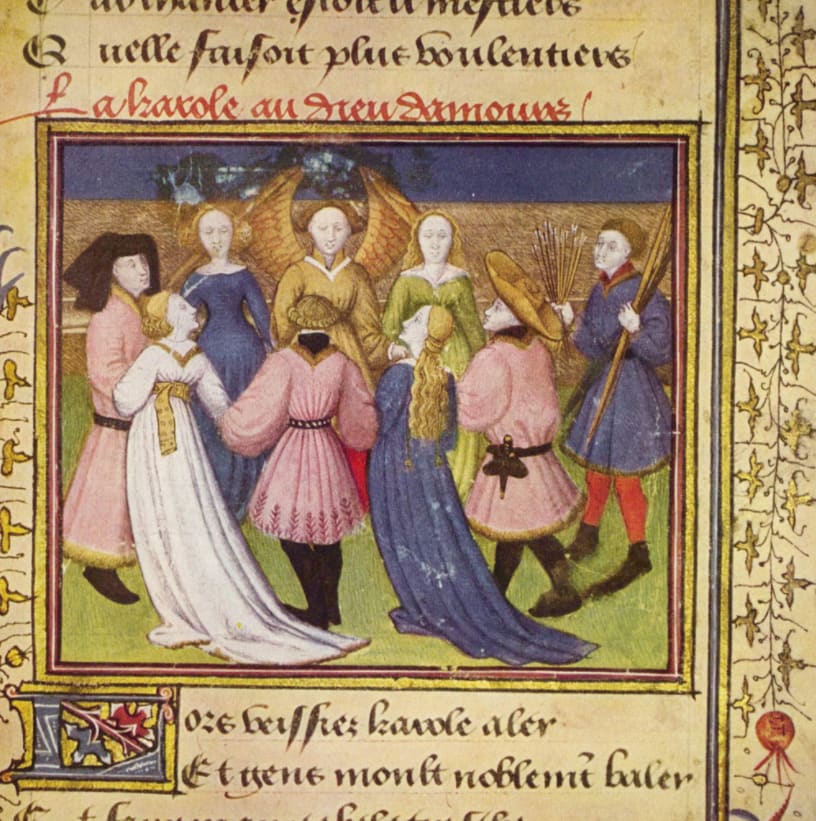Medieval Dance Online - Test Your Knowledge!
Do you know your Basse Dance from your Ballroom? Or your Carole from your Carol? See how much you've picked up by testing your knowledge below!
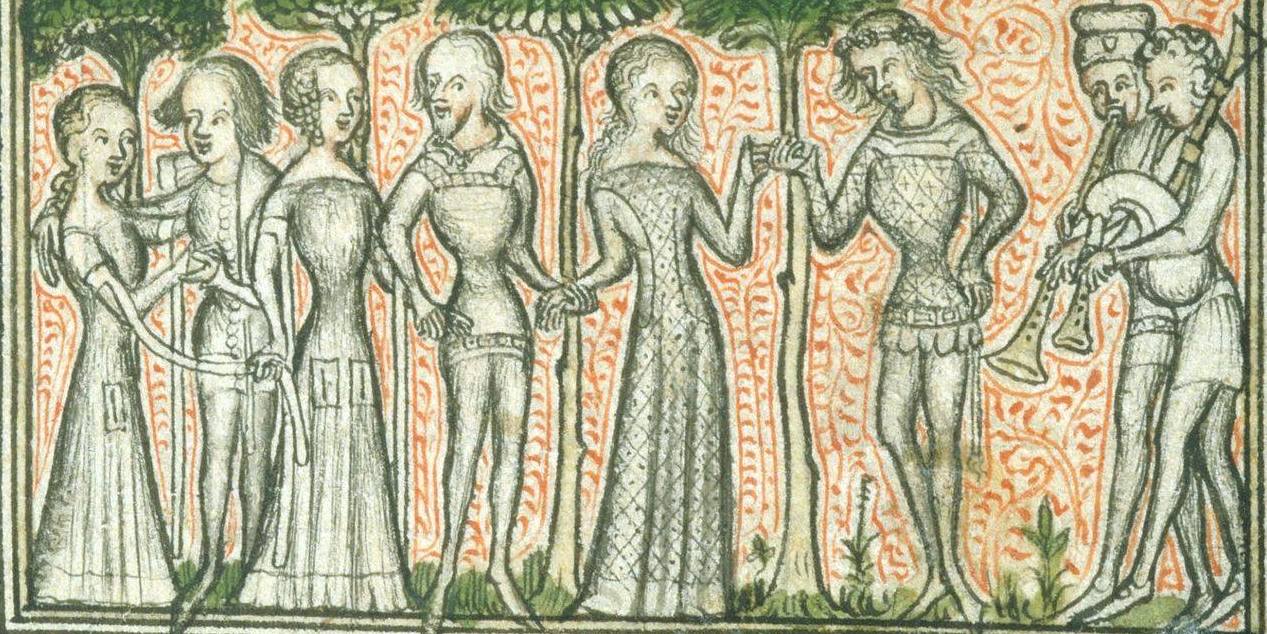
How is 'Estampie' pronounced?
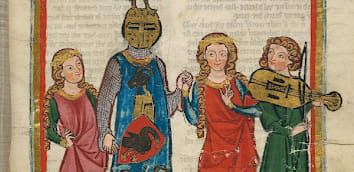
It's a puzzling term to pronounce! Estampie is thought to have come from the Latin word 'stampare', which may link to the stamping of the feet to mark the beat.
Ee-stamp-ee
Eh-stamp-ee
Eh-stamp-ay
Ee-stamp-ay
What is not a reason why men stood to the left of their partners when dancing as a couple?

The man would have had his left hand free as he would have led his lady with his right hand, which, as the hand he would have typically held his sword in, was more likely to be stronger. Following on from old ideas of leadership from the circle dance, this would mean he had the task of leading the couple. This would also allow the lady a larger turning circle so she would not get her long dress caught under her feet!
The man may have had his sword on his left-hand side
The man was the leader of the dance
It would have allowed the lady to turn better
Ladies' dresses were more elaborately-decorated on the right-hand side
What is the name of the dance step that sways to prepare you for dancing?
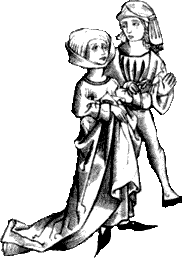
The branle is a swaying step that prepares you for dancing. Just to be confusing, this is also the name of a type of carole!
Reverence
Reprise
Double
Simple
Branle
How would you be able to tell dances from different regions apart?
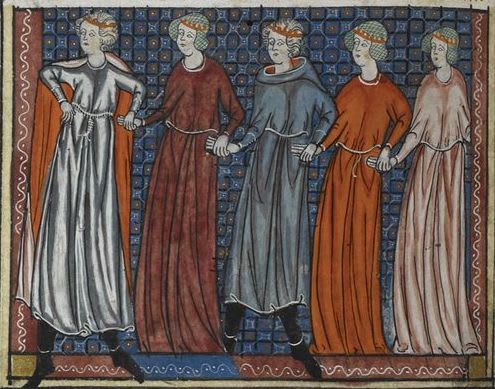
Surprisingly we can't really tell dances of different national identities apart with just their music! There is even evidence from fifteenth-century Italian dancing masters that some dances (that were thought to be Italian) were being performed to French songs.
Choreographic Structure, Choreographic Style, Gestures and Qualities, Costume
Costume, Music, Choreographic Style, Gestures and Qualities
Music, Choreographic Structure, Choreographic Style, Costume
Gestures and Qualities, Costume, Music, Choreographic Structure
Choreographic Style, Choreographic Structure, Costume, Music
What did medieval people not criticise dancing for?
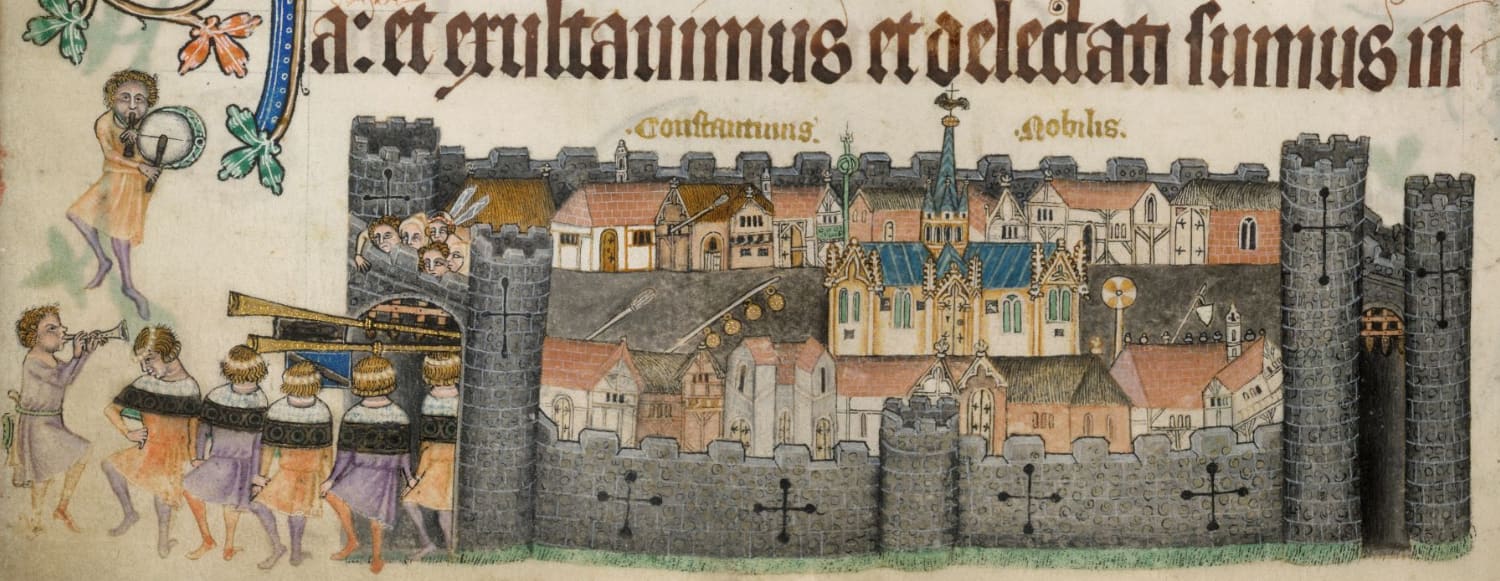
Surprisingly, all of the other answers were things medieval dancers were criticised for!
Moving to the left
Dancing in big groups
Dancing in churchyards
The chance for seduction
What is the nickname given to the patterns made when dancing the Farandole?
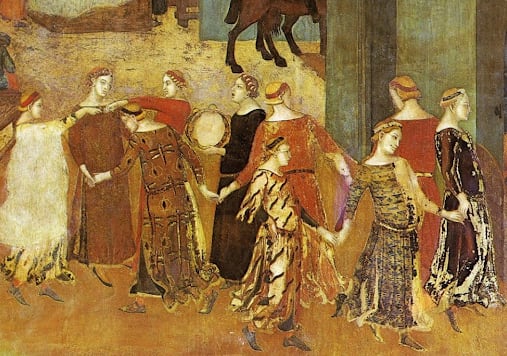
The floor patterns have been given the term ‘farandole figures’, and as they were so often danced the individual 'figures' picked up nicknames themselves!
Farandole Forms
Farandole Features
Farandole Figures
Farandole Fashions
The Pas de Brabant was often a companion dance to which dance?

The basse dance was often performed alongside a few other ‘companion’ dances. In France this was the Pas de Brabant, in Italy the saltarello and in Spain the alta and ioyos. Unfortunately, we know far less about these than we do about the basse dance itself!
The Carole
The Estampie
The Almain
The Basse Dance
What is not another name for the Almain?
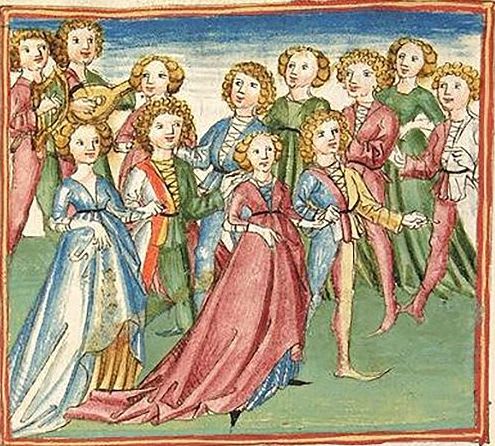
The Almain was also know as:
- Trotto (Germany)
- Saltarello Todesco (Italy, meaning German Saltarello)
- Allemande (general name adopted by many countries, meaning German dance)
Allotto
Trotto
Saltarello Todesco
Allemande
In Estampie music, what is the term for a closed phrase?
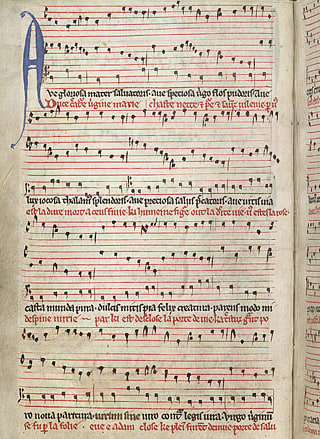
The Estampie had several music units arranged in a specific pattern with a set start and end. In this musical structure, a punctum was a musical phrase, an apertum was an open ending and a clausum was a closed ending.
A Punctum
An Apertum
A Clausum
What does 'Bal des Ardents' mean?
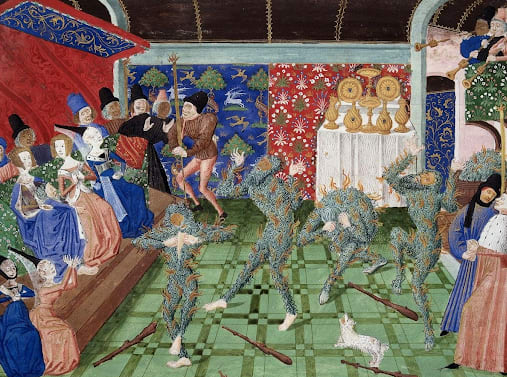
On the Tuesday before Candlemas Day (January 28) 1393, a masquerade, given by Queen Isabeau of France, went horribly wrong. Disguising themselves as shaggy “wood savages”, the King and five others donned costumes made of linen, soaked in flammable wax or pitch to keep an outer coat of frazzled hemp attached. Of all six dancers, only the King and Sire de Nantouillet, who had jumped into a large wine-cooler full of water, escaped with their lives. This fatal display became known as the Bal des Ardents or the Dance of the Burning Men. How awful!
Dance of the Burning Men
Dance of Cactus Folk
Dance of the Savages
Dance of the Woodland Men
You got {number correct}/{number of questions} correct answers
Uh oh... Looks like you need to brush up on your knowledge of medieval dance. Why not have a look at the website and try again!
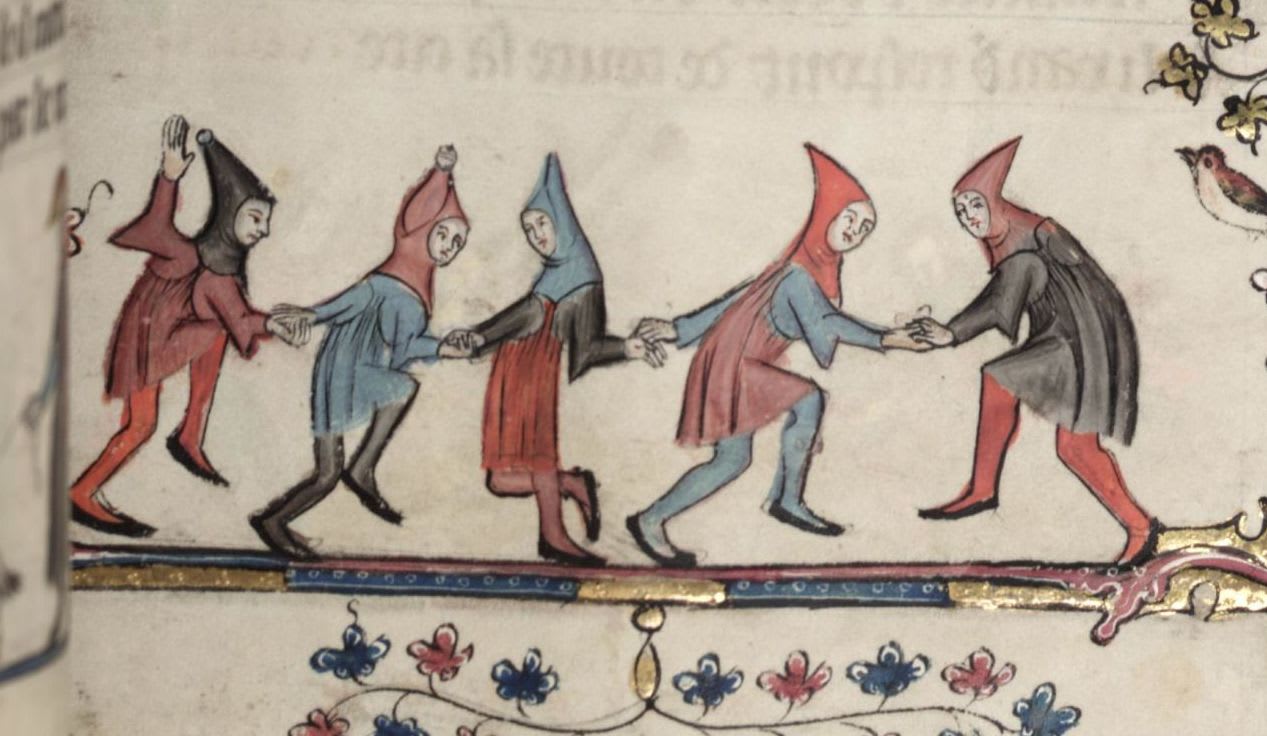
You got {number correct}/{number of questions} correct answers
Perhaps you are dancing in the dark ages... You might know some things, but you would certainly stand out in the medieval period!
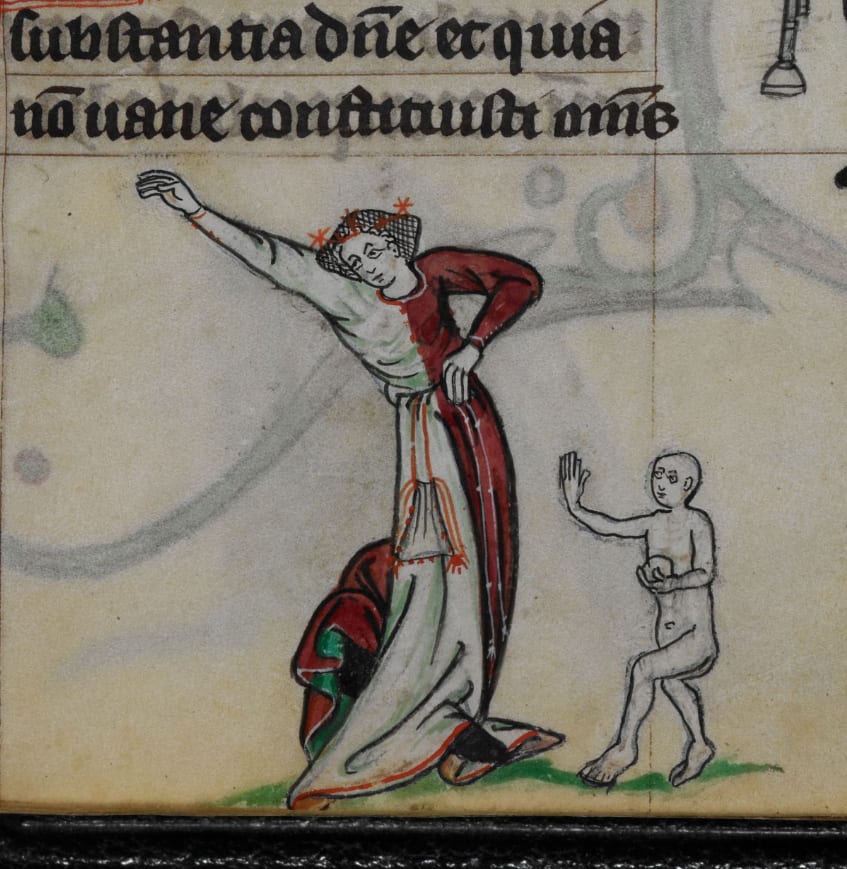
You got {number correct}/{number of questions} correct answers
Congratulations! You really know your stuff! You would fit in well dancing alongside princes and peasants!
